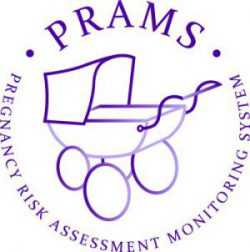Infant Mortality: What Is CDC Doing?
On This Page
- Improvements in Perinatal Care
- Improving Our Understanding of SIDS and SUID
- Using Data to Reduce Infant Mortality
- Building Support to Improve Maternal and Child Health
- CDC's National Center on Birth Defects and Developmental Disabilities
- CDC's National Center for Injury Prevention and Control
- CDC's National Center for Health Statistics
- Partner Links
CDC is committed to improving birth outcomes. This requires public health agencies working together with health care providers, communities, and partners to reduce infant deaths in the United States. This joint approach can help address the social, behavioral, and health risk factors that affect birth outcomes and contribute to infant mortality. On this page, you will learn about CDC’s research, programs, and other efforts to better understand and reduce infant mortality.
CDC’s Division of Reproductive Health
Improvements in Perinatal Care

In 2015, preterm birth and low birth weight accounted for about 17% of infant deaths. CDC provides support to perinatal quality collaboratives (PQCs), which are state or multi-state networks of teams working to improve health outcomes for mothers and babies. Funding supports the capabilities of PQCs to improve the quality of perinatal care in their states, including efforts to reduce preterm birth and improve prematurity outcomes. CDC works with experts to develop resources PQCs can use to further their development, including a how-to guide [PDF 567KB] and a webinar series. CDC and the March of Dimes also launched the National Network of Perinatal Quality Collaboratives to support state-based PQCs in making measureable improvements in statewide health care and health outcomes for mothers and babies.
Improving Our Understanding of SIDS and SUID

In 2015, sudden unexpected infant death (SUID) accounted for just over 15% of all infant deaths in the United States. SUID is the sudden and unexpected death of an infant less than 1 year old without an obvious cause of death before investigation. Most SUIDs are reported as one of three types: sudden infant death syndrome (SIDS), unknown causes, or accidental suffocation and strangulation in bed. CDC’s Division of Reproductive Health has SUID monitoring programs in 16 states and 2 jurisdictions, covering about 30% of all SUID cases in the United States. Participating states and jurisdictions use data about SUID trends and circumstances to develop strategies to reduce future deaths. Learn about CDC resources and activities to address SUID and SIDS.
Using Data to Reduce Infant Mortality

The Pregnancy Risk Assessment Monitoring System (PRAMS) was established in 1987 to reduce infant morbidity and mortality. PRAMS collects state-specific, population-based data on maternal attitudes and experiences before, during, and shortly after pregnancy. Forty-seven states, New York City, Puerto Rico, the District of Columbia, and the Great Plains Tribal Chairmen’s Health Board currently participate in PRAMS. PRAMS data can be used to identify groups of women and infants at high risk for health problems, and to measure progress toward goals in improving the health of mothers and infants. Learn how states are using PRAMS data to help inform efforts to reduce infant mortality at PRAMS Data to Action Success Stories.
Building Support to Improve Maternal and Child Health

The Maternal and Child Health Epidemiology Program (MCHEP) assigns epidemiologists and fellows to states, localities, and tribes to support epidemiologic research and provide scientific information to improve maternal and child health programs and policies. As of January 2017, 13 senior MCHEP epidemiologist assignees and 6 fellows from the Council of State and Territorial Epidemiologists were working in 15 public health agencies or institutions. Learn about MCHEP accomplishments, including the development of a State Infant Mortality (SIM) Toolkit to help states, counties, tribes, and urban areas analyze infant mortality data and translate findings into programs and policies to reduce infant mortality.
Top of PageCDC’s National Center on Birth Defects and Developmental Disabilities

Birth defects affect 1 in 33 babies and are a leading cause of infant mortality in the United States, accounting for about one-fifth of all infant deaths in 2015. CDC works to identify causes of birth defects, find opportunities to prevent them, and improve the health of those living with birth defects. By applying a public health approach that incorporates three essential elements—disease tracking, research to identify causes, and prevention research and programs—we can rapidly translate scientific findings into appropriate public health interventions. Understanding the potential causes of birth defects can lead to recommendations, policies, and services to help prevent them. CDC works toward a day when every child is born with the best health possible. Learn more about birth defects tracking, research, and prevention.
CDC’s National Center for Injury Prevention and Control

In 2015, about 7% of infant deaths in the United States were due to injuries and violence. To better understand the problem, CDC’s National Center for Injury Prevention and Control (Injury Center) tracks data trends and conducts research on unintentional childhood injuries and child abuse and neglect. CDC is also committed to promoting safety by supporting solutions that will save lives and help children live to their fullest potential. CDC’s Injury Center has created helpful resources for parents and public health professionals to help prevent child injury and fatalities, including the National Action Plan on Child Injury Prevention, the Protect the Ones You Love initiative, child passenger restraint guidelines, the Color Me Safe coloring book, the Essentials for Childhood Framework, and a technical package [PDF 3.9MB] to help states and communities prevent child abuse and neglect.
CDC’s National Center for Health Statistics

The infant mortality rate—the ratio of infant deaths to live births—is an important indicator of the overall health of a population. The mission of the National Center for Health Statistics (NCHS) is to provide statistical information that will guide actions and policies to improve the health of the American people. The National Vital Statistics System (NVSS) at NCHS works in partnership with the vital registration systems in each jurisdiction to produce critical information on infant mortality rates including trends and causes, as well as other topics. NCHS also publishes more detailed analyses of infant mortality patterns using linked birth and infant death data.
Partner Links
- American Academy of Family Physicians
- American Academy of Pediatrics
- American College of Obstetricians and Gynecologists
- Association of Maternal & Child Health Programs
- Association of State and Territorial Health Officials
- Eunice Kennedy Shriver National Institute of Child Health and Human Development
- Collaborative Improvement and Innovation Network to Reduce Infant Mortality (IM CoIIN)
- National Healthy Mothers, Healthy Babies Coalition
- HRSA’s Maternal and Child Health Bureau
- International Association for Indigenous Aging
- March of Dimes
- National Healthy Start Association
- Secretary’s Advisory Committee on Infant Mortality
- Society for Maternal-Fetal Medicine
- Page last reviewed: September 11, 2017
- Page last updated: September 11, 2017
- Content source:


 ShareCompartir
ShareCompartir